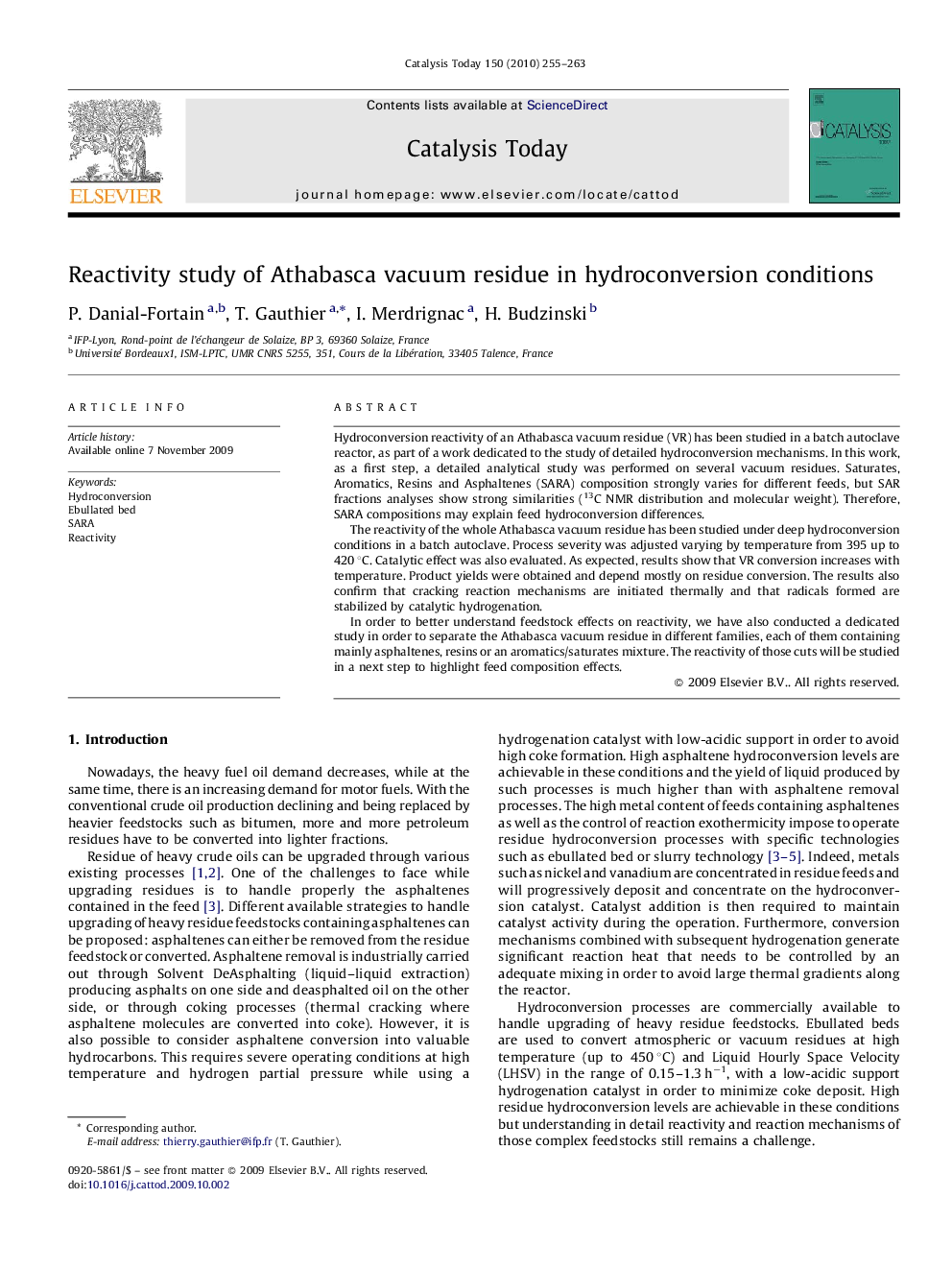| Article ID | Journal | Published Year | Pages | File Type |
|---|---|---|---|---|
| 56754 | Catalysis Today | 2010 | 9 Pages |
Hydroconversion reactivity of an Athabasca vacuum residue (VR) has been studied in a batch autoclave reactor, as part of a work dedicated to the study of detailed hydroconversion mechanisms. In this work, as a first step, a detailed analytical study was performed on several vacuum residues. Saturates, Aromatics, Resins and Asphaltenes (SARA) composition strongly varies for different feeds, but SAR fractions analyses show strong similarities (13C NMR distribution and molecular weight). Therefore, SARA compositions may explain feed hydroconversion differences.The reactivity of the whole Athabasca vacuum residue has been studied under deep hydroconversion conditions in a batch autoclave. Process severity was adjusted varying by temperature from 395 up to 420 °C. Catalytic effect was also evaluated. As expected, results show that VR conversion increases with temperature. Product yields were obtained and depend mostly on residue conversion. The results also confirm that cracking reaction mechanisms are initiated thermally and that radicals formed are stabilized by catalytic hydrogenation.In order to better understand feedstock effects on reactivity, we have also conducted a dedicated study in order to separate the Athabasca vacuum residue in different families, each of them containing mainly asphaltenes, resins or an aromatics/saturates mixture. The reactivity of those cuts will be studied in a next step to highlight feed composition effects.
